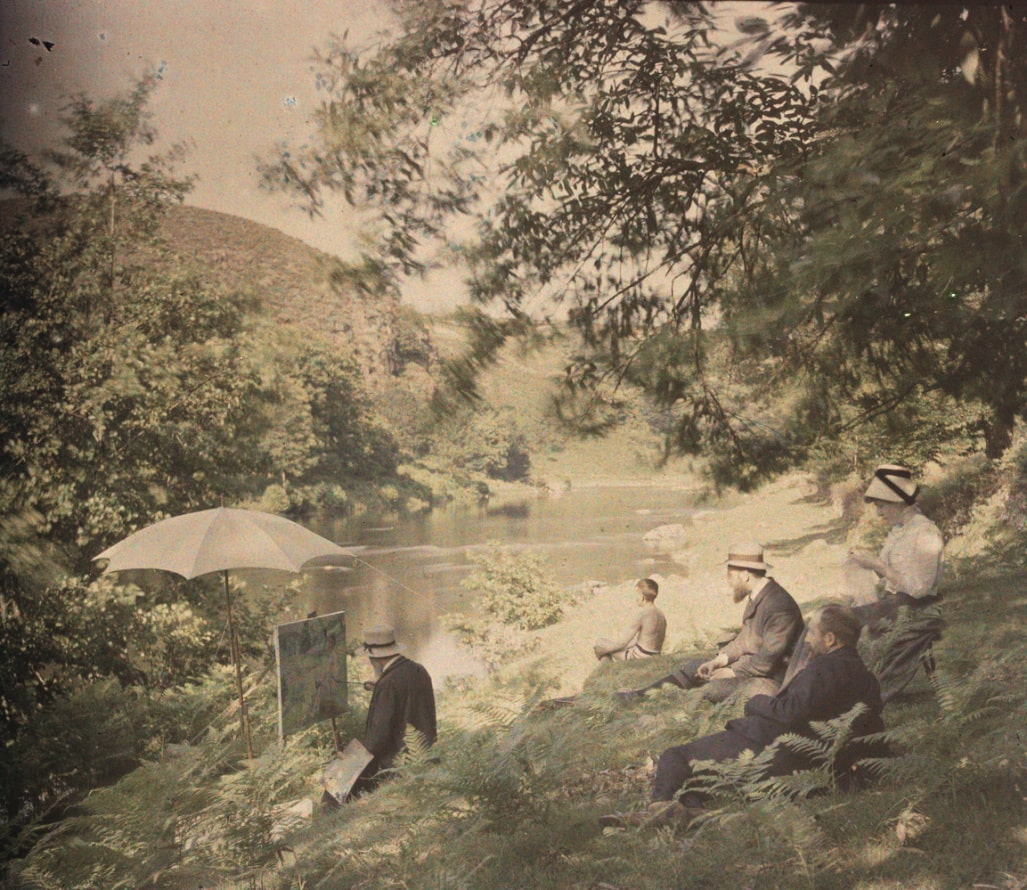e 12 February 2022, the Museum Barberini in Potsdam has been showing the exhibition “A New Art. Photography and Impressionism” with works from the beginnings of photography. In juxtaposition with works of Impressionism, the exhibition illustrates the artistic view and aspirations of the then new medium of art. With over 150 works, it examines photography around 1900 on its way to becoming an autonomous art form and illuminates its complex relationship to Impressionist painting.
Image above: Antonin Personnaz, Armand Guillaumin painting “Bathers at Crozant”, c. 1907, autochrome (presented as a facsimile), 9 x 12 cm, Société française de photographie, Paris © Société française de photographie, Paris.
In the 19th century, numerous photographers chose the same motifs as the Impressionist painters: the forest of Fontainebleau, the cliffs of Étretat or the modern metropolis of Paris. They too studied the changing light situations, the seasons and weather conditions. From the beginning, photography pursued an artistic ambition by experimenting with composition and perspective as well as with the help of different techniques. Their relationship with painting was characterised by both competition and influence until the First World War.

Collection Austrian National Library, Vienna © ÖNB/Kühn
The new medium of photography was both part of the industrial revolution and the beginning of the modern knowledge society. It was presented to an international audience at the world exhibitions. The photographic recording and reproduction techniques served both the time-specific view and the encyclopaedic desire for documentation: The possibility of creating collections of any subject matter with photographs corresponded to the new need to make knowledge accessible and to archive it. Like the remodelled city centres of Paris, London, Vienna or Munich in the historicism of architecture, the new medium brought together tradition and modernity: Museums, libraries and archives emerged, travelogues, surveying and mapping shaped the age. Parallel to sociology, social reportage in photography emerged alongside the social novel of literary realism. The differentiating natural sciences described the present.
Photography – a new art?
What could be more obvious than to use the precision of photography? Was the new medium to develop into more than an auxiliary science of painting? Charles Baudelaire wrote a scathing critique of the first Paris Salon in 1859, at which photographs were also exhibited. In a fictional argument, he had a photographer say: “I want to reproduce things as they are, or better: as they would be if I were not there.” Against this, Baudelaire set the answer of a painter from the “group of imaginary spirits” he favoured: “I want to illuminate things through my spirit and radiate their reflection to the other spirits.” With this, Baudelaire, mastermind and friend of the Impressionists, laid down the antagonism between machine and spirit in the long run. Walter Benjamin’s reflections on the loss of the aura of the “work of art in the age of its technical reproducibility” from 1936 still go back to this distinction.
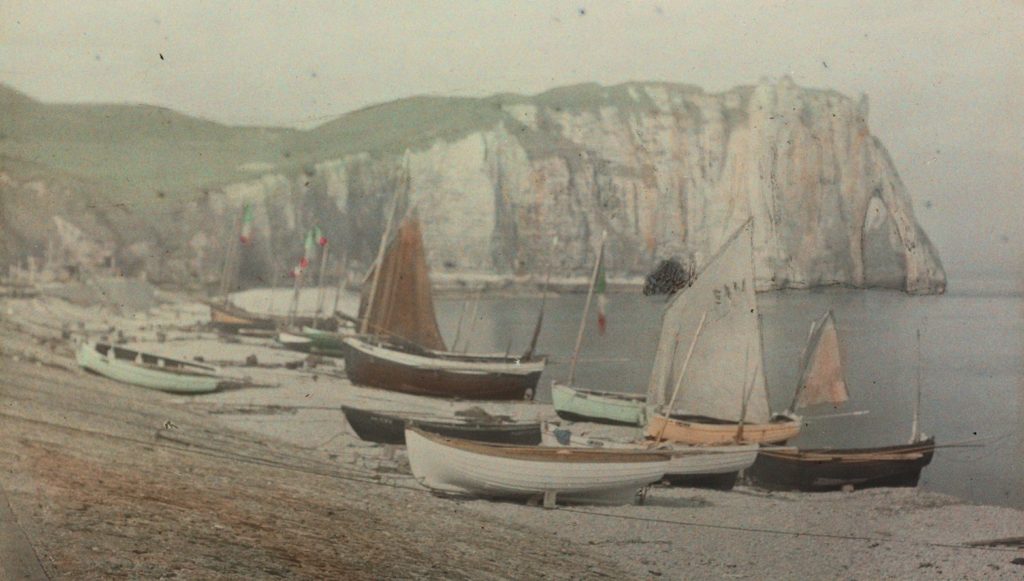
Société française de photographie, Paris © Société française de photographie, Paris
Interplay of Photography and Impressionism
Claude Monet like Berthe Morisot, Camille Pissarro and Pierre-Auguste Renoir worked in the open air to address the new relationship between man and nature. Ortrud Westheider, director of the Museum Barberini: “The Impressionists dedicated their painting to the moment. Their painting was pure presence, which thematised individual reactions to changing light and weather phenomena. This made them allies of the photographers.” In this, the early photographers chose the same subjects as the Impressionists and studied the changing light situations, seasons and weather conditions. “In the exhibition A New Art at the Museum Barberini, one can now experience this interplay between photography and painting,” Ortrud Westheider continues.
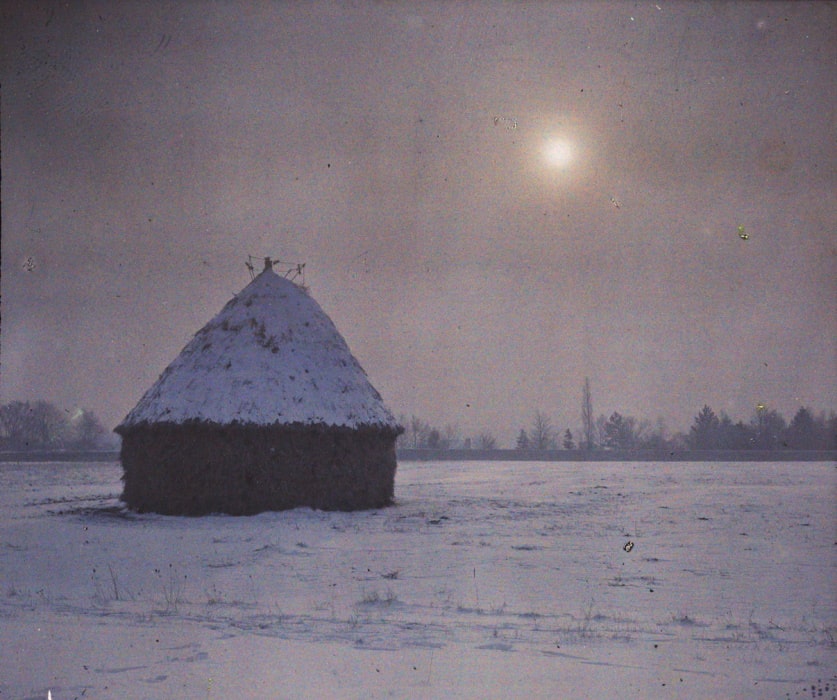
Société française de photographie, Paris © Société française de photographie, Paris
As early as 1881, the exhibition Before Photography. Painting and the Invention of Photography at the New York Museum of Modern Art made it clear that photography did not emerge from a scientific context, but from landscape painting. The exploration of the medium’s perspectival and subjective character has been the focus ever since, enabling such fundamental exhibitions as Gustave Caillebotte. An Impressionist and Photography (Schirn, Frankfurt am Main, 2012) and The Impressionists and Photography (Museo Nacional Thyssen-Bornemisza, Madrid 2019).
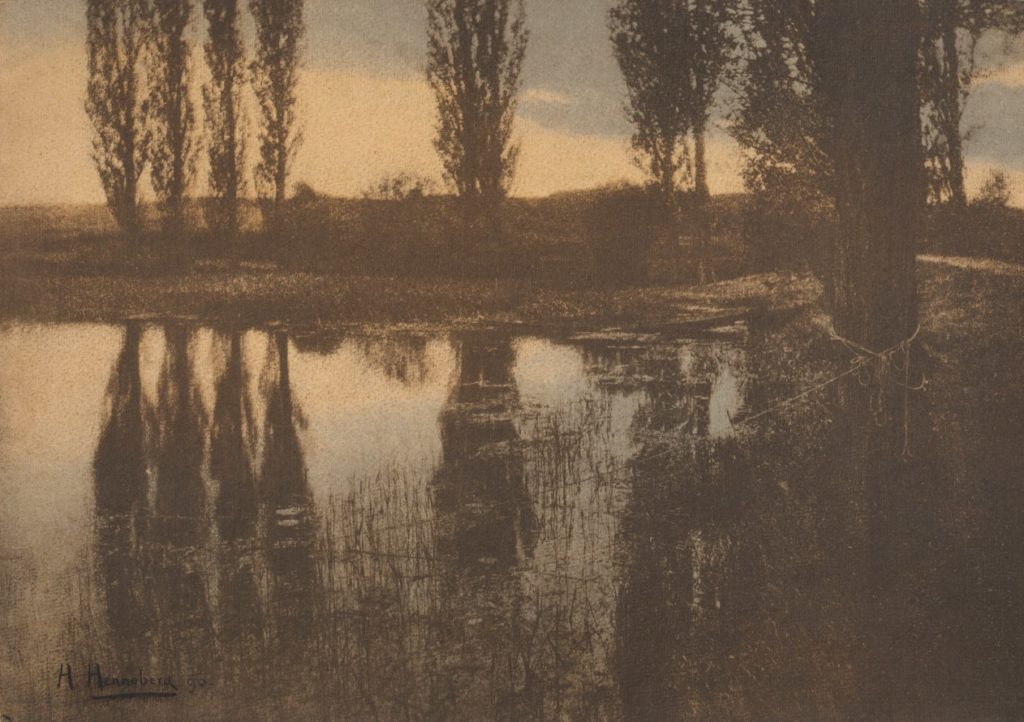
Photoinstitut Bonartes, Vienna © Photoinstitut Bonartes, Vienna
However, the interplay between photography and Impressionism is still insufficiently explored. This is where A New Art. Photography and Impressionism: “From the beginning, photography had artistic ambitions, which it tested by means of composition and perspective, different techniques and materials, as well as with blurring, dramatisation and montage. Nevertheless, photography in the 19th century is to be understood as a hybrid between the poles of science, technology, industry and art. Thus, scientists as well as painters were involved in the invention and development of photographic processes. Initially understood as an aid to painting, the early photographers then quickly developed their own artistic self-confidence and measured themselves against the leading visual artists of their time. Painting, in turn, saw itself inferior in the exact reproduction of reality and had to develop new strategies to distinguish itself from photography,” says guest curator Ulrich Pohlmann about the concept of the exhibition.
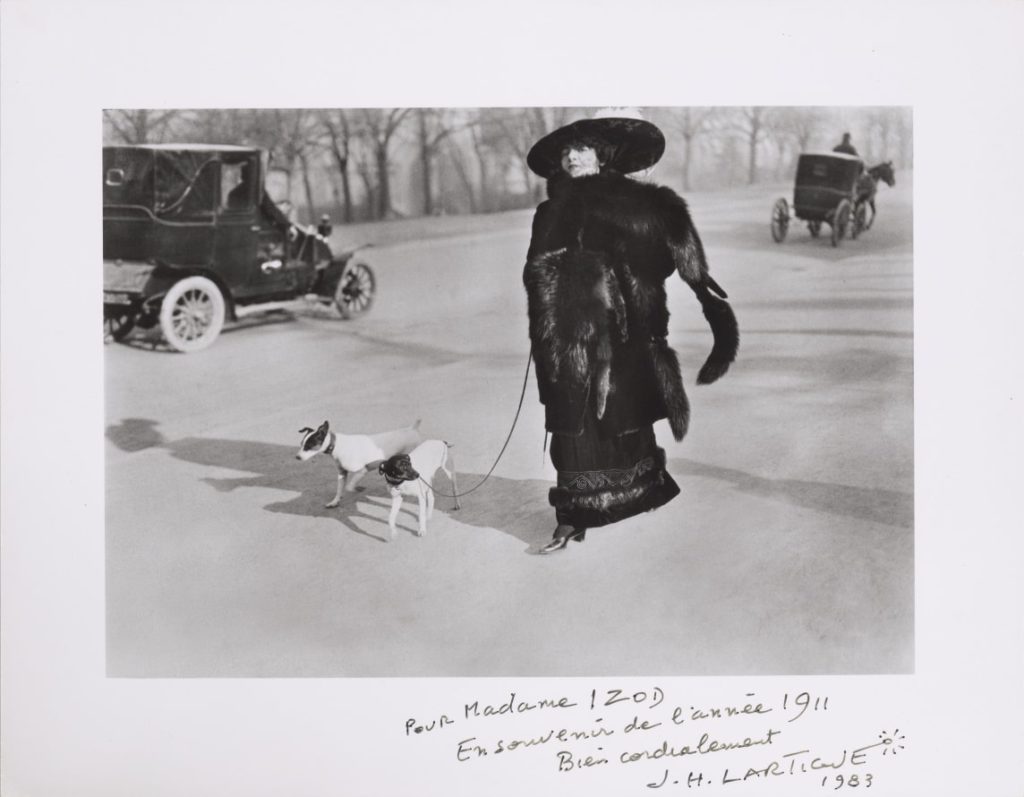
Silver gelatin paper, 21.1 x 29.2 cm
Collection Dietmar Siegert
© Ministère de la Culture (France), MAP-AAJHL; Collection Dietmar Siegert, Photo: Christian Schmieder
A New Art. Photography and Impressionism at the Museum Barberini now illuminates the development of the new medium in 150 works, including photographs by Stéphanie Breton, Auguste Hippolyte Collard, Eugène Cuvelier, Louis-Alphonse Davanne, Robert Demachy, Peter Henry Emerson, Gustave Le Gray, Henri Le Secq, Heinrich Kühn, Charles Marville, Constant Puyo, Henry Peach Robinson, Alfred Stieglitz, Carl Teufel and Alphonse Taupin. Important loans are provided by the Albertina, Vienna, Collection Serge Kakou, Paris, Münchner Stadtmuseum, Musée d’Orsay, Paris, Museum Folkwang, Essen, Photoinstitut Bonartes in Vienna, Societe Francaise de Photographie, Paris, Staatliche Museen zu Berlin, Staatsgalerie Stuttgart and many other institutions.

Staatsgalerie Stuttgart, Graphische Sammlung, acquired 1989, Rolf Mayer Collection
© Photo: bpk / Staatsgalerie Stuttgart / Peter Henry Emerson
Cooperation between two houses with a focus on Impressionism
The Museum Barberini, which opened in 2017, is showing A New Art. Photography and Impressionism, the Museum Barberini, which opened in 2017, is showing an exhibition of photographs for the first time. The starting point for this theme is the collection of Impressionist and Post-Impressionist paintings by museum donor Hasso Plattner, which has been on permanent display in Potsdam since September 2020 and offers numerous points of contact with artists such as Gustave Caillebotte, Claude Monet and Berthe Morisot. The Von der Heydt Museum, which is showing the show in Wuppertal in cooperation with the Museum Barberini from 2 October 2022 to 8 January 2023, is one of those museums that collected Impressionist art early on and thus set an example not only in Germany but in Europe.
The exhibitions in Potsdam and Wuppertal will be accompanied by a comprehensive catalogue published by Prestel, Munich, with contributions by Ulrich Pohlmann, Monika Faber, Dominique de Font-Réaulx, Matthias Krüger, Esther Ruelfs and Bernd Stiegler, based on the findings of the symposium preparing the exhibitions in Potsdam in October 2021. After A New Art. Photography and Impressionism, the Museum Barberini will present in 2022, in cooperation with the Albertina Modern, Vienna, The Form of Freedom. International Abstraction after 1945 (4 June – 25 September 2022) and in cooperation with the Peggy Guggenheim Collection, Venice, Surrealism and Magic. Enchanted Modernity (22 October 2022 – 29 January 2023)
e 12 February 2022, the Museum Barberini in Potsdam has been showing the exhibition “A New Art. Photography and Impressionism” with works from the beginnings of photography. In juxtaposition with works of Impressionism, the exhibition illustrates the artistic view and aspirations of the then new medium of art. With over 150 works, it examines photography around 1900 on its way to becoming an autonomous art form and illuminates its complex relationship to Impressionist painting.
Image above: Antonin Personnaz, Armand Guillaumin painting “Bathers at Crozant”, c. 1907, autochrome (presented as a facsimile), 9 x 12 cm, Société française de photographie, Paris © Société française de photographie, Paris.
In the 19th century, numerous photographers chose the same motifs as the Impressionist painters: the forest of Fontainebleau, the cliffs of Étretat or the modern metropolis of Paris. They too studied the changing light situations, the seasons and weather conditions. From the beginning, photography pursued an artistic ambition by experimenting with composition and perspective as well as with the help of different techniques. Their relationship with painting was characterised by both competition and influence until the First World War.

Collection Austrian National Library, Vienna © ÖNB/Kühn
The new medium of photography was both part of the industrial revolution and the beginning of the modern knowledge society. It was presented to an international audience at the world exhibitions. The photographic recording and reproduction techniques served both the time-specific view and the encyclopaedic desire for documentation: The possibility of creating collections of any subject matter with photographs corresponded to the new need to make knowledge accessible and to archive it. Like the remodelled city centres of Paris, London, Vienna or Munich in the historicism of architecture, the new medium brought together tradition and modernity: Museums, libraries and archives emerged, travelogues, surveying and mapping shaped the age. Parallel to sociology, social reportage in photography emerged alongside the social novel of literary realism. The differentiating natural sciences described the present.
Photography – a new art?
What could be more obvious than to use the precision of photography? Was the new medium to develop into more than an auxiliary science of painting? Charles Baudelaire wrote a scathing critique of the first Paris Salon in 1859, at which photographs were also exhibited. In a fictional argument, he had a photographer say: “I want to reproduce things as they are, or better: as they would be if I were not there.” Against this, Baudelaire set the answer of a painter from the “group of imaginary spirits” he favoured: “I want to illuminate things through my spirit and radiate their reflection to the other spirits.” With this, Baudelaire, mastermind and friend of the Impressionists, laid down the antagonism between machine and spirit in the long run. Walter Benjamin’s reflections on the loss of the aura of the “work of art in the age of its technical reproducibility” from 1936 still go back to this distinction.

Société française de photographie, Paris © Société française de photographie, Paris
Interplay of Photography and Impressionism
Claude Monet like Berthe Morisot, Camille Pissarro and Pierre-Auguste Renoir worked in the open air to address the new relationship between man and nature. Ortrud Westheider, director of the Museum Barberini: “The Impressionists dedicated their painting to the moment. Their painting was pure presence, which thematised individual reactions to changing light and weather phenomena. This made them allies of the photographers.” In this, the early photographers chose the same subjects as the Impressionists and studied the changing light situations, seasons and weather conditions. “In the exhibition A New Art at the Museum Barberini, one can now experience this interplay between photography and painting,” Ortrud Westheider continues.

Société française de photographie, Paris © Société française de photographie, Paris
As early as 1881, the exhibition Before Photography. Painting and the Invention of Photography at the New York Museum of Modern Art made it clear that photography did not emerge from a scientific context, but from landscape painting. The exploration of the medium’s perspectival and subjective character has been the focus ever since, enabling such fundamental exhibitions as Gustave Caillebotte. An Impressionist and Photography (Schirn, Frankfurt am Main, 2012) and The Impressionists and Photography (Museo Nacional Thyssen-Bornemisza, Madrid 2019).

Photoinstitut Bonartes, Vienna © Photoinstitut Bonartes, Vienna
However, the interplay between photography and Impressionism is still insufficiently explored. This is where A New Art. Photography and Impressionism: “From the beginning, photography had artistic ambitions, which it tested by means of composition and perspective, different techniques and materials, as well as with blurring, dramatisation and montage. Nevertheless, photography in the 19th century is to be understood as a hybrid between the poles of science, technology, industry and art. Thus, scientists as well as painters were involved in the invention and development of photographic processes. Initially understood as an aid to painting, the early photographers then quickly developed their own artistic self-confidence and measured themselves against the leading visual artists of their time. Painting, in turn, saw itself inferior in the exact reproduction of reality and had to develop new strategies to distinguish itself from photography,” says guest curator Ulrich Pohlmann about the concept of the exhibition.

Silver gelatin paper, 21.1 x 29.2 cm
Collection Dietmar Siegert
© Ministère de la Culture (France), MAP-AAJHL; Collection Dietmar Siegert, Photo: Christian Schmieder
A New Art. Photography and Impressionism at the Museum Barberini now illuminates the development of the new medium in 150 works, including photographs by Stéphanie Breton, Auguste Hippolyte Collard, Eugène Cuvelier, Louis-Alphonse Davanne, Robert Demachy, Peter Henry Emerson, Gustave Le Gray, Henri Le Secq, Heinrich Kühn, Charles Marville, Constant Puyo, Henry Peach Robinson, Alfred Stieglitz, Carl Teufel and Alphonse Taupin. Important loans are provided by the Albertina, Vienna, Collection Serge Kakou, Paris, Münchner Stadtmuseum, Musée d’Orsay, Paris, Museum Folkwang, Essen, Photoinstitut Bonartes in Vienna, Societe Francaise de Photographie, Paris, Staatliche Museen zu Berlin, Staatsgalerie Stuttgart and many other institutions.

Staatsgalerie Stuttgart, Graphische Sammlung, acquired 1989, Rolf Mayer Collection
© Photo: bpk / Staatsgalerie Stuttgart / Peter Henry Emerson
Cooperation between two houses with a focus on Impressionism
The Museum Barberini, which opened in 2017, is showing A New Art. Photography and Impressionism, the Museum Barberini, which opened in 2017, is showing an exhibition of photographs for the first time. The starting point for this theme is the collection of Impressionist and Post-Impressionist paintings by museum donor Hasso Plattner, which has been on permanent display in Potsdam since September 2020 and offers numerous points of contact with artists such as Gustave Caillebotte, Claude Monet and Berthe Morisot. The Von der Heydt Museum, which is showing the show in Wuppertal in cooperation with the Museum Barberini from 2 October 2022 to 8 January 2023, is one of those museums that collected Impressionist art early on and thus set an example not only in Germany but in Europe.
The exhibitions in Potsdam and Wuppertal will be accompanied by a comprehensive catalogue published by Prestel, Munich, with contributions by Ulrich Pohlmann, Monika Faber, Dominique de Font-Réaulx, Matthias Krüger, Esther Ruelfs and Bernd Stiegler, based on the findings of the symposium preparing the exhibitions in Potsdam in October 2021. After A New Art. Photography and Impressionism, the Museum Barberini will present in 2022, in cooperation with the Albertina Modern, Vienna, The Form of Freedom. International Abstraction after 1945 (4 June – 25 September 2022) and in cooperation with the Peggy Guggenheim Collection, Venice, Surrealism and Magic. Enchanted Modernity (22 October 2022 – 29 January 2023)
Since 12 February 2022, the Museum Barberini in Potsdam has been showing the exhibition “A New Art. Photography and Impressionism” with works from the beginnings of photography. In juxtaposition with works of Impressionism, the exhibition illustrates the artistic view and aspirations of the then new medium of art. With over 150 works, it examines photography around 1900 on its way to becoming an autonomous art form and illuminates its complex relationship to Impressionist painting.
Image above: Antonin Personnaz, Armand Guillaumin painting “Bathers at Crozant”, c. 1907, autochrome (presented as a facsimile), 9 x 12 cm, Société française de photographie, Paris © Société française de photographie, Paris.
In the 19th century, numerous photographers chose the same motifs as the Impressionist painters: the forest of Fontainebleau, the cliffs of Étretat or the modern metropolis of Paris. They too studied the changing light situations, the seasons and weather conditions. From the beginning, photography pursued an artistic ambition by experimenting with composition and perspective as well as with the help of different techniques. Their relationship with painting was characterised by both competition and influence until the First World War.

Collection Austrian National Library, Vienna © ÖNB/Kühn
The new medium of photography was both part of the industrial revolution and the beginning of the modern knowledge society. It was presented to an international audience at the world exhibitions. The photographic recording and reproduction techniques served both the time-specific view and the encyclopaedic desire for documentation: The possibility of creating collections of any subject matter with photographs corresponded to the new need to make knowledge accessible and to archive it. Like the remodelled city centres of Paris, London, Vienna or Munich in the historicism of architecture, the new medium brought together tradition and modernity: Museums, libraries and archives emerged, travelogues, surveying and mapping shaped the age. Parallel to sociology, social reportage in photography emerged alongside the social novel of literary realism. The differentiating natural sciences described the present.
Photography – a new art?
What could be more obvious than to use the precision of photography? Was the new medium to develop into more than an auxiliary science of painting? Charles Baudelaire wrote a scathing critique of the first Paris Salon in 1859, at which photographs were also exhibited. In a fictional argument, he had a photographer say: “I want to reproduce things as they are, or better: as they would be if I were not there.” Against this, Baudelaire set the answer of a painter from the “group of imaginary spirits” he favoured: “I want to illuminate things through my spirit and radiate their reflection to the other spirits.” With this, Baudelaire, mastermind and friend of the Impressionists, laid down the antagonism between machine and spirit in the long run. Walter Benjamin’s reflections on the loss of the aura of the “work of art in the age of its technical reproducibility” from 1936 still go back to this distinction.

Société française de photographie, Paris © Société française de photographie, Paris
Interplay of Photography and Impressionism
Claude Monet like Berthe Morisot, Camille Pissarro and Pierre-Auguste Renoir worked in the open air to address the new relationship between man and nature. Ortrud Westheider, director of the Museum Barberini: “The Impressionists dedicated their painting to the moment. Their painting was pure presence, which thematised individual reactions to changing light and weather phenomena. This made them allies of the photographers.” In this, the early photographers chose the same subjects as the Impressionists and studied the changing light situations, seasons and weather conditions. “In the exhibition A New Art at the Museum Barberini, one can now experience this interplay between photography and painting,” Ortrud Westheider continues.

Société française de photographie, Paris © Société française de photographie, Paris
As early as 1881, the exhibition Before Photography. Painting and the Invention of Photography at the New York Museum of Modern Art made it clear that photography did not emerge from a scientific context, but from landscape painting. The exploration of the medium’s perspectival and subjective character has been the focus ever since, enabling such fundamental exhibitions as Gustave Caillebotte. An Impressionist and Photography (Schirn, Frankfurt am Main, 2012) and The Impressionists and Photography (Museo Nacional Thyssen-Bornemisza, Madrid 2019).

Photoinstitut Bonartes, Vienna © Photoinstitut Bonartes, Vienna
However, the interplay between photography and Impressionism is still insufficiently explored. This is where A New Art. Photography and Impressionism: “From the beginning, photography had artistic ambitions, which it tested by means of composition and perspective, different techniques and materials, as well as with blurring, dramatisation and montage. Nevertheless, photography in the 19th century is to be understood as a hybrid between the poles of science, technology, industry and art. Thus, scientists as well as painters were involved in the invention and development of photographic processes. Initially understood as an aid to painting, the early photographers then quickly developed their own artistic self-confidence and measured themselves against the leading visual artists of their time. Painting, in turn, saw itself inferior in the exact reproduction of reality and had to develop new strategies to distinguish itself from photography,” says guest curator Ulrich Pohlmann about the concept of the exhibition.

Silver gelatin paper, 21.1 x 29.2 cm
Collection Dietmar Siegert
© Ministère de la Culture (France), MAP-AAJHL; Collection Dietmar Siegert, Photo: Christian Schmieder
A New Art. Photography and Impressionism at the Museum Barberini now illuminates the development of the new medium in 150 works, including photographs by Stéphanie Breton, Auguste Hippolyte Collard, Eugène Cuvelier, Louis-Alphonse Davanne, Robert Demachy, Peter Henry Emerson, Gustave Le Gray, Henri Le Secq, Heinrich Kühn, Charles Marville, Constant Puyo, Henry Peach Robinson, Alfred Stieglitz, Carl Teufel and Alphonse Taupin. Important loans are provided by the Albertina, Vienna, Collection Serge Kakou, Paris, Münchner Stadtmuseum, Musée d’Orsay, Paris, Museum Folkwang, Essen, Photoinstitut Bonartes in Vienna, Societe Francaise de Photographie, Paris, Staatliche Museen zu Berlin, Staatsgalerie Stuttgart and many other institutions.

Staatsgalerie Stuttgart, Graphische Sammlung, acquired 1989, Rolf Mayer Collection
© Photo: bpk / Staatsgalerie Stuttgart / Peter Henry Emerson
Cooperation between two houses with a focus on Impressionism
The Museum Barberini, which opened in 2017, is showing A New Art. Photography and Impressionism, the Museum Barberini, which opened in 2017, is showing an exhibition of photographs for the first time. The starting point for this theme is the collection of Impressionist and Post-Impressionist paintings by museum donor Hasso Plattner, which has been on permanent display in Potsdam since September 2020 and offers numerous points of contact with artists such as Gustave Caillebotte, Claude Monet and Berthe Morisot. The Von der Heydt Museum, which is showing the show in Wuppertal in cooperation with the Museum Barberini from 2 October 2022 to 8 January 2023, is one of those museums that collected Impressionist art early on and thus set an example not only in Germany but in Europe.
The exhibitions in Potsdam and Wuppertal will be accompanied by a comprehensive catalogue published by Prestel, Munich, with contributions by Ulrich Pohlmann, Monika Faber, Dominique de Font-Réaulx, Matthias Krüger, Esther Ruelfs and Bernd Stiegler, based on the findings of the symposium preparing the exhibitions in Potsdam in October 2021. After A New Art. Photography and Impressionism, the Museum Barberini will present in 2022, in cooperation with the Albertina Modern, Vienna, The Form of Freedom. International Abstraction after 1945 (4 June – 25 September 2022) and in cooperation with the Peggy Guggenheim Collection, Venice, Surrealism and Magic. Enchanted Modernity (22 October 2022 – 29 January 2023)
WHEN?
Saturday, 12th February to Sunday, 8th May 2022
Mo–Fr 9–18 Uhr
Sa–So + Feiertage 10-15 Uhr
WHERE?
Humboldtstraße 5-6, 14467 Potsdam
More on this exhibition at Museum Barberini


